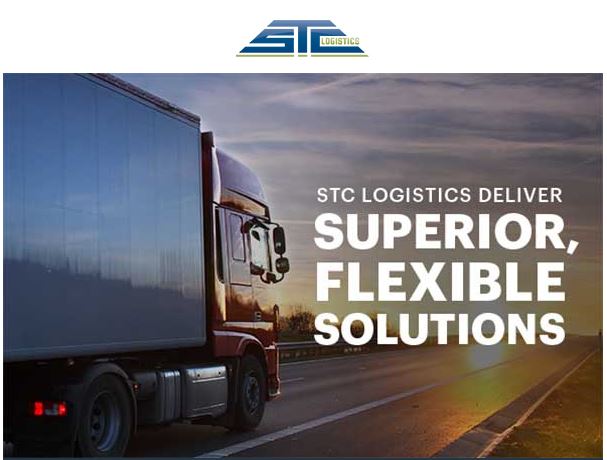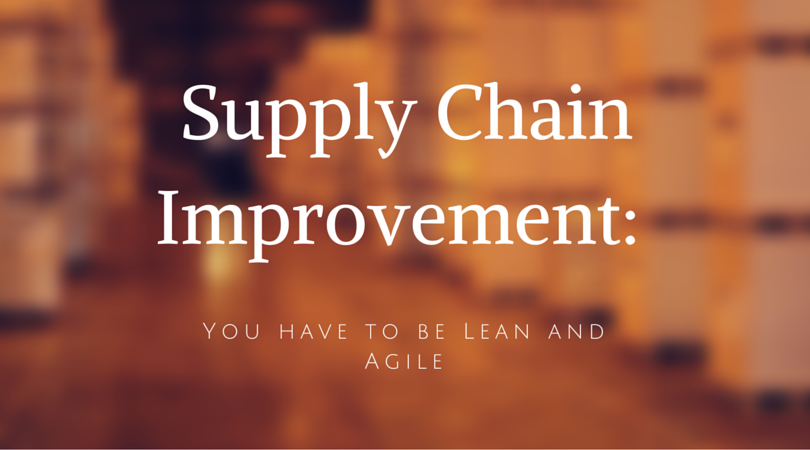Author: STCBlogAdmin
Delivering Brand Growth
Do you know what is big for retail logistics today? Having a retail shipping partner that can handle variable demand with retail consolidation and bestowing you full visibility to your shipments. And this is exactly what STC Logistics can do for you!
At STC Logistics, we utilize our elite proprietary technology to help both big and small retail vendors tackle retail logistics in a revolutionary way. We can handle shipments across all of North America and Canada. If you are looking to work with a reliable retail logistics partner that can help you expedite brand growth, contact us today to learn more.
Supply Chain Improvement: You have to be Lean and Agile
The constant emergence of new technologies, a changing economy and shifting customer expectations make improving efficiencies critical in the supply chain world. Would your company rather be lean or agile? You don’t have a choice – you must do both! Call it a hybrid approach, custom or individualized management.
It doesn’t matter what name you adopt from that trendy business management blog you follow, simply deploying a Lean concept to drive your supply chain function is probably not enough… you also need flexibility.
Agile Methodology
An agile approach to supply chain helps the team respond to the unpredictability of today’s business world and the individualized demands of customers. Lean identifies and eliminates waste, which is a very good thing. It reduces unnecessary costs, speeds deliveries, and brings everyone together in the constant search for improved efficiencies. Anything that doesn’t add value to the supply chain function is out the door at a Lean operation.
But when the company combines agile with Lean, it adds reassurance for customers that the supply chain can adapt and handle new products and deliveries with speed and flexibility. That’s an improved service that customers will appreciate and pay a premium to acquire.
Actual Demand
No one wants to see product sitting in the warehouse. It needs to be on the sales floor or delivered to the customer to be profitable. Again, this is not a new concept. But to keep moving to where it needs to be when it needs to be there, the supply chain can’t rely on just Lean or agility, it needs both.
With this “both” notion in mind, it brings the supply chain function from only supply all the way back to the manufacturing of product. Agility starts from the legs of the organization, much like a highly agile athlete…it’s all in the lower body!
Communicate
The agile mindset, once fully implemented has the potential to bring the organization together from top to bottom as long as good communication is in place from the production operation through to final, last-mile delivery to the user.
This requires more people talking and working together. It can be done, and it not only supports the company’s goals, it delivers to today’s omni-channel customers who buy from many different devices and in every physical location imaginable.
Maybe Some Support is Needed….
If your company is really good at building a quality widget, putting together a Lean, agile supply chain probably sounds like entirely new business that needs to be started. So the real task at hand here is finding the right subcontractor to handle the job and make it a reality.
Now, it’s time to hire a third-party logistics service. The good news for your business lies in the fact that you know your customer, when and where they expect delivery and how much all of this should cost. Take that knowledge into the meeting with a potential third-party logistics partner to get customized services.
As one of the most trusted logistics providers in the country, STC Logistics can deliver on the promises you make even in the tough situations. You can add a comprehensive logistics partner to your business. Take a look at the range of services we offer and call us today!
2016 Retail Sales Predictions
The National Retail Federation (NRF) released its economic forecast for the year, projecting that retail industry sales will grow 3.1%, higher than the 10-year average of 2.7%. The NRF also announced that it expects non-store sales in 2016 to grow between 6% and 9%. These predictions exclude purchases related to automobiles, gas stations and restaurants. Read more of the forecast here.
4 Ways to Grow Your Global Ecommerce Retail Company
It’s not an easy process to develop a global ecommerce shopping platform for your retail business. Retailers understand that everything begins with the consumer; they are the ones who go through the shopping experience from start to finish and with an ever-increasing amount of interruptions during the buying process, retailers must adapt to survive and thrive.
MultichannelMerchant.com provides four tips for retailers to grow their global ecommerce business here.
How Apps and Uber Are Impacting Freight Transportation
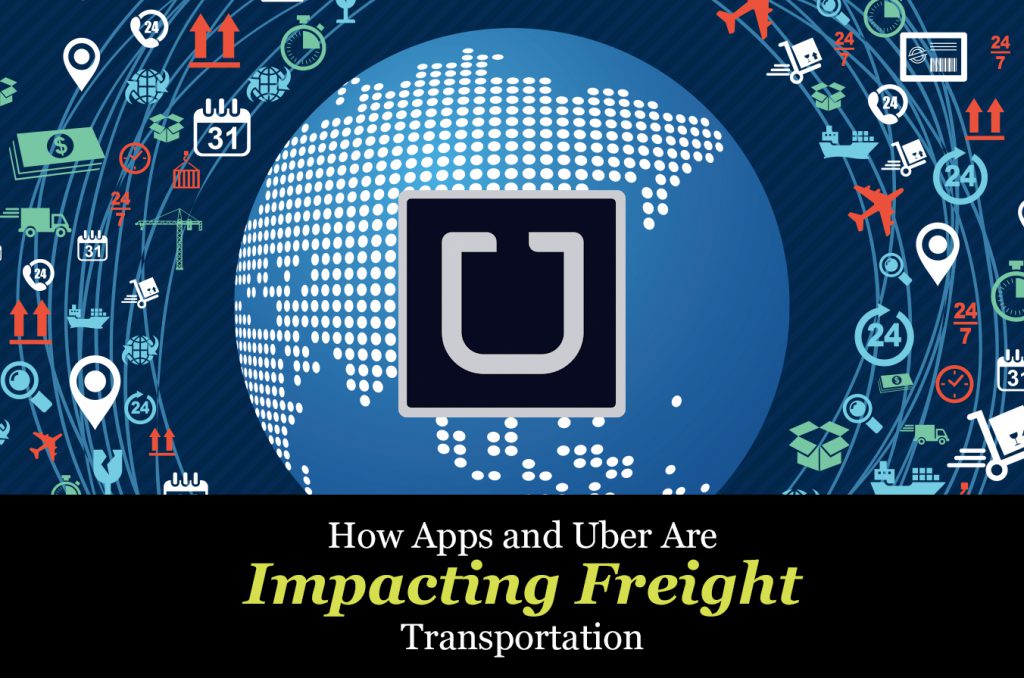
Technological advancements are undoubtedly impacting the transportation industry. Let’s take the rise of Uber as an example. If you are unfamiliar with Uber, it’s used as an alternate to taxi services. People download the app on their smartphones and plug in their desired location. Using technology, Uber connects them with a private driver who is nearby, and the payment is automatically deducted from the user’s bank account.
Uber is a popular method for people to get from point A to B because users like its convenience and competitive pricing. However, it’s also controversial. Critics point to their “surge pricing periods,” in which Uber charges more for busier times. Detractors also highlight safety and insurance issues. Pretty much anyone with a license can sign up to be an Uber driver as long as they pass a background check. Taxi drivers are also licensed to do so, while Uber drivers are not.
So Is This The Future of Freight Transportation?
While Uber is used for individuals, this concept has bigger implications for larger scale freight transportation. For example, some organizations have developed or are planning to develop similar-type apps for trucking.
Convoy is based out of Washington and bills itself as the Uber version for trucking. They use their technology to connect shippers with local carriers. According to an article in The Verge, “Convoy gives pre-approved carriers the option to accept or decline a job based on the listed price, which eliminates haggling — a hallmark of the trucking business.” New York-based Transfix serves as an online marketplace for freight.
So are apps and technology like this the future of the industry? Some people are arguing that the “uber-ization” of the trucking industry is a good thing. According to the American Trucking Association (ATA), trucking is valued as an $800 billion industry, and more than 3 million trucks trek out more than 100 billion miles annually. While there may be some room in the industry for these apps, there are major liabilities that come with this approach.
Think Logically and Consider the Pitfalls
When it comes to your shipments, there are more factors to consider than just price and location. Shippers must evaluate any potential damages to their brand and the importance of customer service in the event of any issues.
For example, you would have to assume the potential risk or damage from a drive that you have never used, but based on an app. For many of these new apps, carriers can sign up as long as they have basic qualifications such as insurance. However, many of them often overlook important aspects such as a driver’s history backed up by reliable data. Do you really want to get into a legal or branding quagmire in the event of an accident?
The Quality of 3PL Companies
3PL organizations provide many benefits to their clients including:
- Expedited freight capability
- Accurate transit estimates
- Flexibility
- Customer service
- Tracking controls
- Increased security
- Reliable deliveries
- Ability to meet specific situations and requirements
- White glove services
STC Logistics specializes in expedited freight logistics solutions. We are one of the top trusted logistics companies in NJ. To learn more about our services, click the button below!
New Study Proves that Poor Customer Service Heavily Impacts Retention
Cloud communications provider Corvisa conducted their third annual Customer Service Report compiled from responses of more than 1,200 U.S. consumers. The findings were shocking, with 48% of respondents claiming that they have stopped conducting business with a company becasue of a negative customer service experience within the past year. Read more about the study’s findings on Multichannel Merchant here.
2015 in Review for the Logistics and Transportation Industry
Another year is in the books, and we’re now deep in the first quarter of 2016. While it’s evident that the logistics and transportation industry experienced a rapid pace of change in 2015, there were many other strong trends that resonated above typical predictions for the year, such as plummeting fuel prices and more. Click here to read Logistic Management’s list of the top stories and themes of 2015.
Smoothing out the Lags, Delays and Capacity Shortages
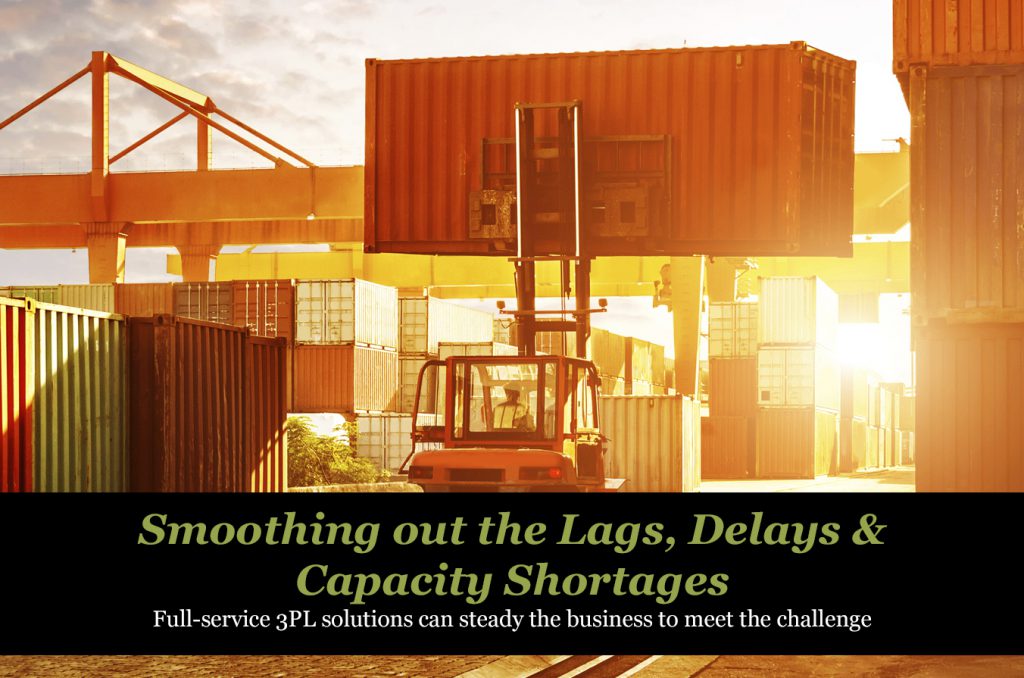
Full-service 3PL solutions can steady the business to meet the challenge
Every business deals with countless moving parts that are both within and outside of its control. Anything that can help you predict what’s coming, or even just a piece of the business you can count on from day-to-day, feels like a break from the storm.
If you had to move products through the northeast last winter, you know that nothing was going to arrive on time – record snowfall pounded the area! Add to that a spike in energy costs in the same area, and you were left with manufacturing companies who had to shut down.
This all created some nasty gaps for retailers looking to make a strong product push or simply supply the popular items that customers were looking to buy.
Careful planning and a long-term view
The time to seek the assistance of a third-party logistics provider (3PL) is not after a problem arises. While that provider can probably do something to ease the pain, it’s still just a short-term fix, and it will likely rear its ugly head again.
The time to begin a partnership and solidify your logistics function is right now so you can build a cushion for your business, giving it the ability to withstand the unforeseen. (And the unforeseen always comes.) Most businesses know what pains them or what could potentially cause discomfort. You will not stop the problem from happening, but a business can at least lay the foundation for a great partnership while putting tools in place to respond to a bad situation.
This changes the conversation from one business trying to take advantage of another in a tough situation. Both sides will benefit from this type of preparation.
So what can a 3PL do to close production or other gaps in the supply chain?
With weather, labor shortages, equipment failures, production lags and everything else that can go wrong, the only real question to answer is “Can our logistics function withstand a crisis?”
Whether it’s a shortage of shipping capacity, production lags or rising costs that limit your ability to deliver product where it is needed, a full-service 3PL company has the resources to help whether the storm. Solutions could include a simple addition of capacity; streamlining processes; improved buying power; more efficient transactions or improved software that connects the entire company.
You will notice most of those solutions can be put in place well before anything nasty happens.
When times get tough or you have a serious issue that needs to be addressed, you will more than likely turn to a friend. That’s what you need from a 3PL provider — a good relationship with someone you can count on to help with any situation. You don’t need a business that immediately wants to start cranking up the extra charges.
Learn how STC Logistics springs to action in a tough situation. If you’ve been considering adding a complete logistics and supply chain management service to your operations, take a look at our services.
5 Logistics Outlooks for the Retail Industry for 2016
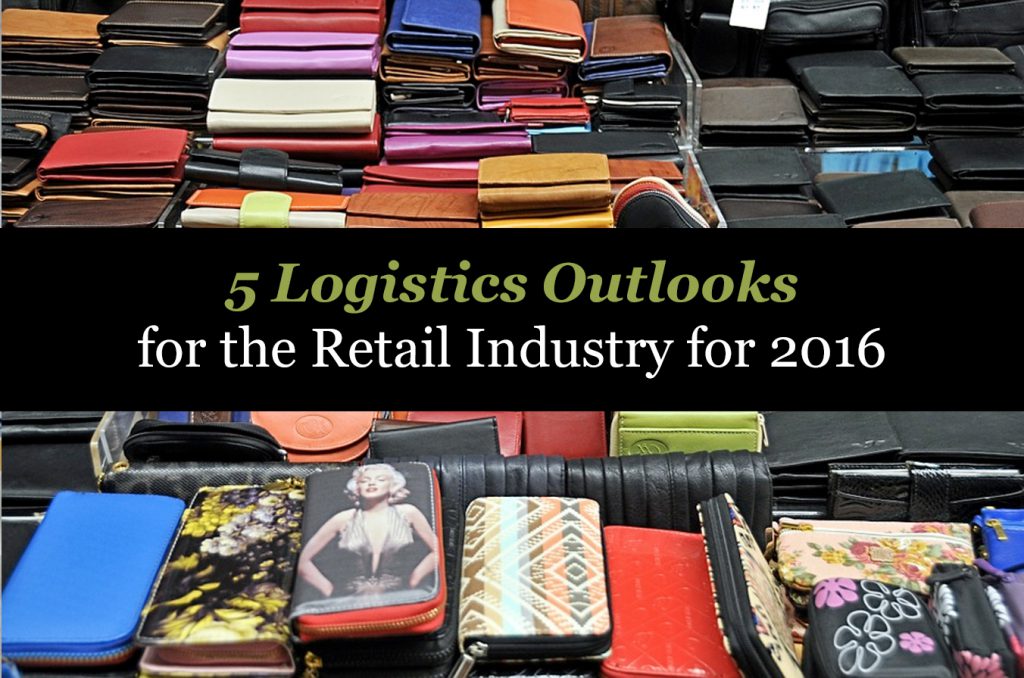
The time of year when budgets are finalized and all eyes turn toward the future has arrived. Predictions will spew from those ‘in the know’ with logistics. Here’s our take on the retail logistics industry in 2016 – some are “bold predictions,” while others remain steady:
1) Retailer organization charts may take on a new look
Many folks in the retail segment are predicting a big shift in the way organizations are structured; the goal is to completely deliver on the omni-channel vision. There’s less of a need for a boundary between the e-commerce function and the remaining pieces of the organization.
The people running the “traditional retail piece” of the business are learning more and becoming savvier in the digital marketplace. Bringing the two sides together will make sense for many corporate headquarters in retail. The two must complement each other well, and companies will realize this in 2016.
2) Omni-channel becomes an expectation
The number of shoppers buying from multiple devices and through multiple channels will surpass the traditional in-person buyers. Omni-channel interfaces are no longer a nifty trick, but an expectation from your customers.
Retailers and their logistics partners will continue to prime themselves for this shift while still presenting a unified face for the business. (Remember that reorganization thing we talked about above?)
3) Lack of workers in distribution
As e-commerce continues to balloon, a number of larger retailers have invested heavily in new distribution facilities across the country in an effort to meet the demand and deliver products quickly, according to the Wall Street Journal.
For the smaller distributors in the world, this creates a squeeze on resources including trucks, space on trains and a shrinking pool of people willing to work at the warehouse. It can be challenging to find workers in distribution; this could gum up the works even in the smoothest running logistics business.
4) Last-mile fulfillment meets the Jetsons
Undaunted by the squeeze on resources, retailers will strive to compete with giant online sellers by using their stores as fulfillment centers. Some bleeding-edge retailers will attempt to use self-driving cars in hopes of averting the expense of free shipping and returns.
5) Unify within your business and with your partners
Retailers, distributors and logistics providers will continue to find better ways to simplify their services and streamline scheduling. It will no longer be good enough to have the employees working in shipping handle all distribution to stores. Sales, marketing, supply chain and store managers will all need to have a say in decision making when it comes to logistics.
The squeeze on resources, management, new technologies — it’s all changing and moving ahead at light speed. Preparing for change, constantly improving and staying flexible in 2016. A logistics provider with a wide-range of services will serve as a great partner for your business.
For more information about the services we provide, click here or call us at 1-800-547-4324!
10 Tips for Streamlining Warehouse Efficiency
Shipping is the number one cost in the fulfillment arena, and without a comprehensive plan for cost monitoring and optimization, retailers can easily end up being charged much more than anticipated. Fortunately, there are many ways that retailers can improve warehouse efficiency to reduce costs; one way is to control inbound and outbound freight. Click here to read the rest of the article on MultichannelMerchant.com.
